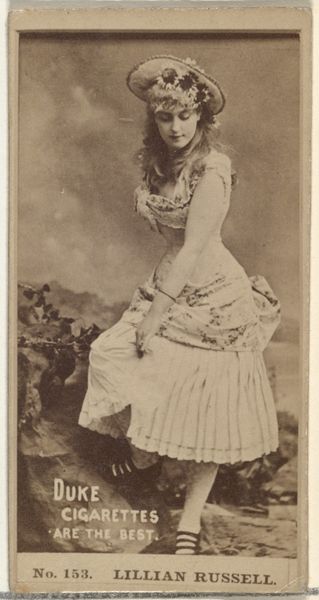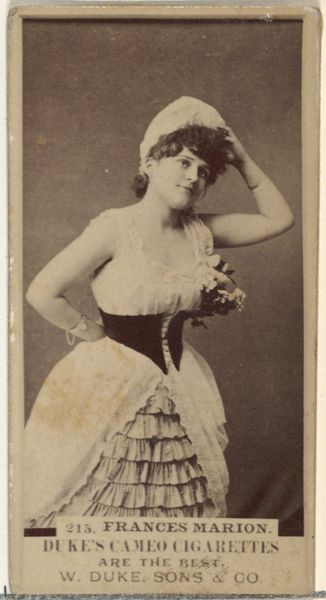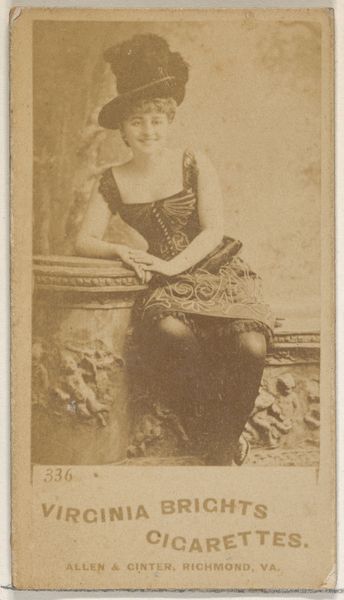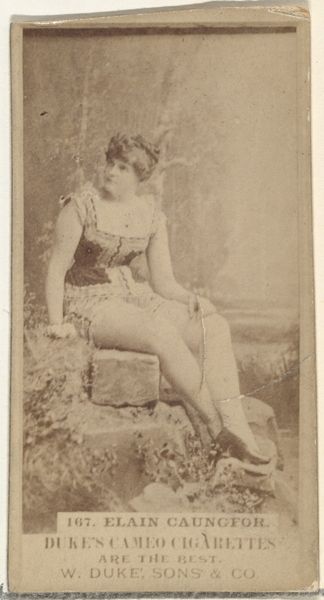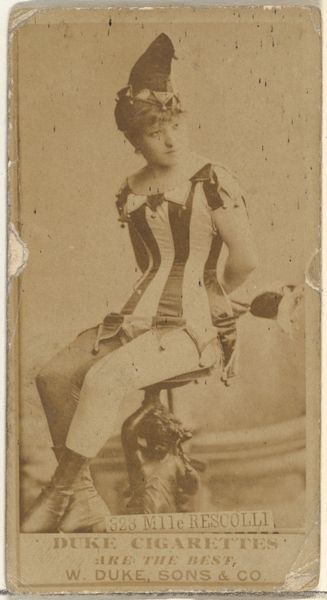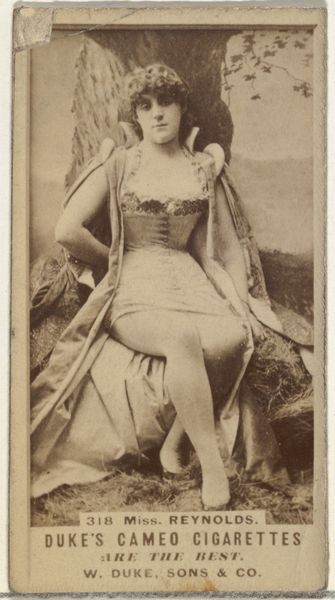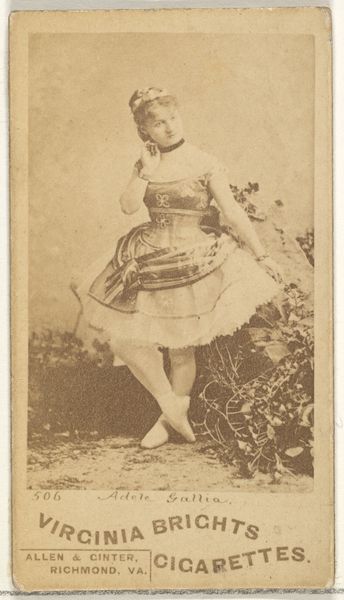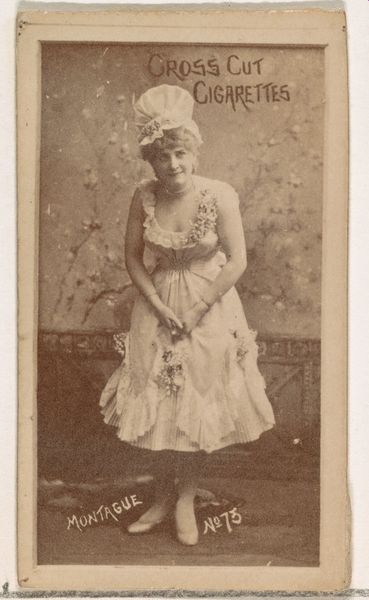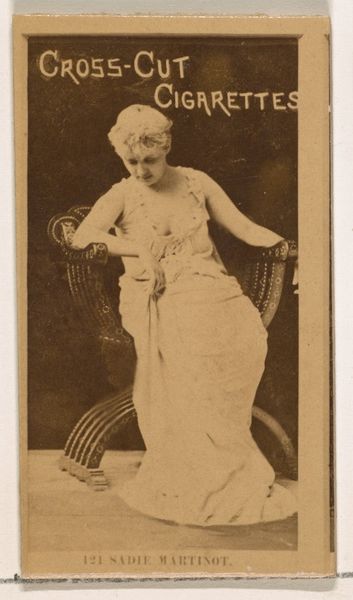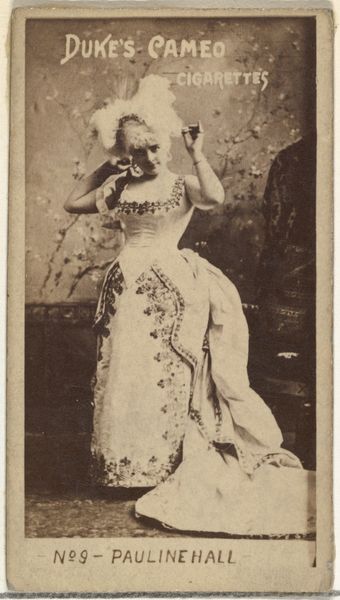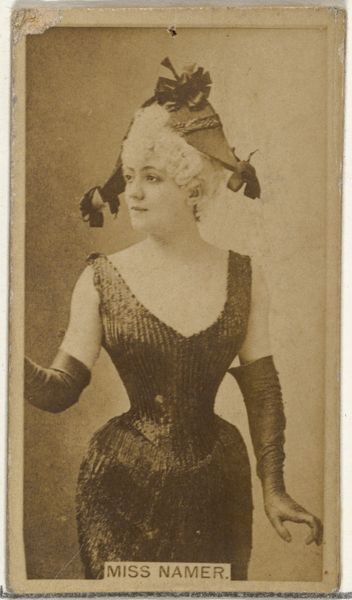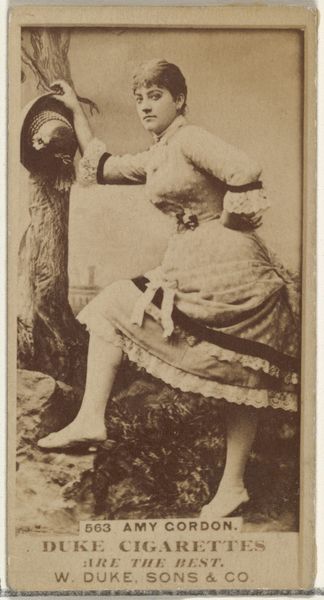
Card Number 99, Lillian Russell, from the Actors and Actresses series (N145-2) issued by Duke Sons & Co. to promote Cross Cut Cigarettes 1880s
0:00
0:00
drawing, print, photography
#
portrait
#
drawing
#
photo restoration
# print
#
impressionism
#
photography
Dimensions: Sheet: 2 5/8 × 1 7/16 in. (6.6 × 3.7 cm)
Copyright: Public Domain
Curator: Here we have a portrait of Lillian Russell, an American actress and singer, featured on a cigarette card issued by Duke Sons & Co. in the 1880s. These cards were inserts designed to promote Cross Cut Cigarettes. Editor: My immediate impression is how staged and consciously seductive the image is, from the way she's perched on that chair to the corseted outfit. It really speaks volumes about the performative nature of femininity at the time. Curator: Absolutely. The Actors and Actresses series, of which this card is a part, capitalized on the popularity of celebrities. It offers a fascinating glimpse into the marketing strategies of the era, and how actresses were essentially used to sell products. The cards circulated widely and created cultural icons. Editor: I'm struck by the connection between Lillian Russell’s celebrity and the normalization of smoking, particularly through images of women. This portrait functions as both entertainment and subtle advertising, contributing to a culture where female sexuality is commodified alongside harmful products. Curator: Indeed. The choice of Russell, a performer celebrated for her beauty and stage presence, was very deliberate. It linked notions of glamour and sophistication with the consumption of cigarettes, shaping cultural values and consumer desires in tandem. It also reveals the evolving role of women in public life. Editor: The use of these cards also promoted very particular ideals of beauty and success—white, conventionally attractive actresses, for example. What stories are overlooked or intentionally erased when celebrity is manufactured this way? This wasn’t about authentically representing all performers; it was about constructing an aspirational image linked to purchasing power. Curator: Precisely. We need to remember these cards didn’t simply reflect society but actively shaped it. Examining them allows us to understand the mechanisms through which consumer culture intersects with identity, particularly gender and class. The card, viewed as ephemera at the time, gives voice to anxieties regarding a woman’s presence outside of the domestic sphere. Editor: Considering this object, then, requires us to reckon with how the aesthetics of glamour intertwine with the mechanics of exploitation, and the complex legacy of mass media in shaping both desire and discrimination. Curator: Indeed. This portrait is much more than an image. It's a powerful piece of evidence connecting economic structures, gender dynamics, and the burgeoning power of mass media at the turn of the century. Editor: It’s unsettling to think that something as seemingly innocuous as a cigarette card held such sway over cultural attitudes and the objectification of women. This image serves as a sobering reminder of the powerful influence visual culture has in creating norms, both positive and negative, regarding identity and societal structures.
Comments
No comments
Be the first to comment and join the conversation on the ultimate creative platform.
